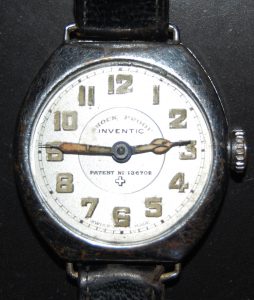

None of the Radium girls lived passed the mid-1930’s.ġ921 magazine advertisement for Undark, a product of the Radium Luminous Material Corporation which was involved in the Radium Girls scandal. The case was settled outside of court in 1928. The press went wild and christened them the “ radium girls“. In the initial hearing, the women were bedridden and too weak even to raise their arms and take the vow. In 1927, 5 women filed a case against the American Radium Corporation. Workers employed in painting luminous watch dials began to suffer from a menagerie of ailments including bone cancer, severe arthritis, anemia, bone decay and muscle decay. Alpha particles emitted by the radium can cause bone necrosis and bone cancer. The body mistakes the radioactive metal for calcium an incorporates into incorporates it into the bone. The reason the radium paint caused so much damage is because radium is chemically similar to calcium. Some of the girls simply lost a few teeth, one girl had such extensive damage that she had to have her entire lower jaw removed. The side effects are tooth loss, abscesses, bone decay and intense pain. Radium jaw is basically damage around the mouth due to exposure to the radium paint. Over time, this resulted in bone death and cancer for many of these women.Ī horrific condition know as “radium jaw” occurred in many of the workers.

By doing this, the women ingested copious amounts of radioactive paint every day. The women were instructed to keep the tip of their paintbrushes fine by sliding it between their lips or curling it with their tongue. Companies producing these dials hired young women to paint the numerals and hands with the luminescent paint. Luminous dials were first produced during World War I and became popular with the public thereafter. Radium Girls work in a factory of the United States Radium Corporation, circa 1922.

The most famous case is that of the radium girls, women hired by companies to paint the dials of watches with luminous paint made from radium. But even so a few a these products managed to cause a lot of harm. Luckily, considering that radium was incredibly expensive at the time ($2.2 million a gram in today’s money) most of these elixirs and quack medical insturments did not actually contain any uranium and if they did, it was only in very small amounts. began to market radium products that supposedly gave people more energy while improving their health and curing a variety of illnesses to boot. Inspired by news of the medical benefits of this amazing element, inventors in Europe and the U.S. The seemingly miraculous qualities of radium were getting a lot of press. Radium was successfully used to treat cancer and x-radiography helped doctors treat injured soldiers during World War I. Marie Curie’s work with radioactivity in the early 20th century had partly revolved around the search for possible medical applications for the new discovery. a ceramic water cooler with a small amount of radium incorporated into it’s clay mix and a few glow-in-the-dark watch faces from the early twentieth century.Īll of these products were inspired by real science going on at the time, but their inventors misunderstood the significance of that science, with dangerous results. Visitors to our new special exhibit Death by Natural Causes will get to see a number of these products, including a health tonic that was advertised as “perpetual sunshine”. There was a plethora of radium products on the market, many of them specifically intended to be ingested. These days we all know that radium is not something you should be ingesting, but a hundred years ago that wasn’t the case at all. A 50’s Radium Dial, previously exposed tu UV-A light.


 0 kommentar(er)
0 kommentar(er)
